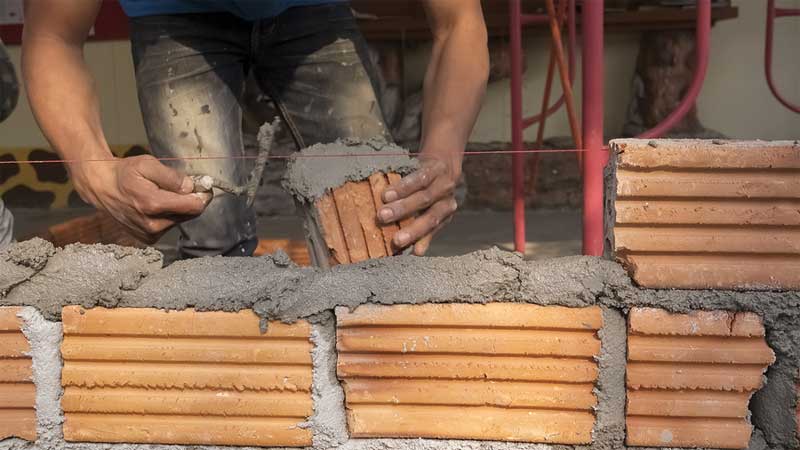 INSIDE CSI
INSIDE CSI
Sheldon Wolfe, RA, FCSI, Distinguished Member, CCS, CCCA
Many specifiers grumble about the typical architect’s lack of knowledge of how things work and how building materials and assemblies go together—there is that perceived belief, “If I can draw it, someone can build it!”
Some architecture schools do include courses about the practical aspects of the field, but those courses are often optional, so most architects graduate with a lot of knowledge about visual design, planning, and presentation, but little comprehension of materials or construction.
However, having a practical understanding is critical. It’s fine to have a PowerPoint presentation about masonry, but so much more could be learned from participants getting their hands dirty. It’s easy to draw a 4x4x8 brick, but what does it ‘feel’ like?
It takes no more effort to draw a 3-5/8 x 2-1/4 x 11-5/8 brick than a 3-5/8 x 3-5/8 x 15-5/8 brick, or, for that matter, a 12 x 8 x 16 concrete masonry unit (CMU), but what difference does it make to the mason? It doesn’t take any longer to draw a large masonry unit, but does the size affect installation time? Until you pick up a brick, mix the mortar, and try to build a wall, you simply cannot appreciate what your details mean in the real world. Such a shortcoming presents a tremendous opportunity for a variety of continuing education programs.
In June 2000, 25 architects from my office went to the masonry apprentice school in St. Paul, Minnesota, for an afternoon of fun, down-and-dirty continuing education. The program was set up by Olene Bigelow, our local International Masonry Institute (IMI) rep, and a contact from the Brick Industry Association (BIA).

Photo © BigstockPhoto/Anan Kaewkhammul
The apprentices set up a series of stations, each showing a specific part of the job. Demonstrations included reading drawings and specifications, estimating, mixing mortar, laying brick and CMU of various sizes, and installing doorframes. After the book-learnin’ discussions, the architects got their hands dirty at each station and experienced how their decisions affected construction and schedule. (The Minneapolis-St. Paul Chapter of CSI later visited the same school and followed the same program.)
It’s easy to complain about what architects do not know, but they are not alone. Specifiers may understand more of the various technical properties of materials, but many have had no more practical experience in construction than architects. I am using masonry as an example, but similar programs could be done for everything that goes into a building.
All of us can us do better if we know more about how other team members do their jobs.
Sheldon Wolfe, RA, FCSI, Distinguished Member, CCS, CCCA, has been a specifier with BWBR in St. Paul, Minnesota, for more than 20 years, and an architect for nearly four decades. His experience includes 10 years in the public sector and work at firms ranging in size from two to 150; his projects have included medical, correctional, educational, and wastewater treatment facilities. Wolfe has written more than 400 articles about construction-related subjects, and is also a member of the Editorial Advisory Board for The Construction Specifier. His work appears on two blogs: swconstructivethoughts.blogspot.com and swspecificthoughts.blogspot.com.




